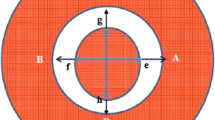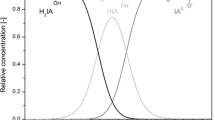Abstract
A strain improvement program was developed to increase extracellular phytase (E.C. 3.1.3.8.) production by Aspergillus niger (syn. A. ficuum) NRRL 3135. Ultraviolet (UV) radiation was used as the mutagen and resistance to 50 μg/ml of hygromycin B as the selection method. Mutant 2DE, the product of two UV treatments, had phytase (PhytA) activity at pH 5.0 in the extracellular filtrate that was 3.3-fold higher than the wild-type activity. The activity of the non-specific acid phosphatase with a pH optimum of 6.0 (Pase) was one-fifth the activity of the wild type and the non-specific acid phosphatase with a pH optimum of 2.5 (PhytB) was not significantly different from the wild type. The mutant and wild-type PhytA, PhytB and Pase responsed similarly in inhibition studies. However, the wild-type enzymes were inhibited more by 1 mm sodium fluoride and 1 mm phosphomycin. PhytA production by the mutant was repressed 60% by inorganic phosphate concentrations of 0.006% (wt/vol) or above. The mutant had an extracellular protein concentration 3.2-fold higher than the wild type, which correlated with its higher phytase activity at pH 5.0, but not with phytase activity at pH 2.5 and acid phosphatase activities. The isolate may be a phytase catalytic mutant, as well as, on overproducer of phytase. In addition, a mutant with an apparent lack of activity of all three acid phosphatases was isolated.
Similar content being viewed by others
References
Boland AR de, Garner GB, O'Dell BL (1975) Identification and properties of “phytate” in cereal grains and oilseed products. J Agric Food Chem 23:1186–1189
Bradford MM (1976) A rapid and sensitive method for the quantitation of microgram quantities of protein using the principle of protein-dye binding. Anal Biochem 72:248–254
Common RH (1940) The phytic acid content of some poultry feeding stuffs. Analyst 65:79–83
Demain AL (1981) Industrial microbiology. Science 214:987–995
Ehrlich KC, Montalbano BG, Mullaney EJ, Dischinger HC, Ullah AHJ (1993) Identification and cloning of a second phytase gene (PhytB) from Aspergillus niger (ficuum). Biochem Biophys Res Commun 195:53–56
Erdman JW (1979) Oilseed phytates: nutritional implications. J Am Oil Chem Soc 56:736–741
Gibson DM (1987) Production of extracellular phytase from Aspergillus ficuum on starch media. Biotechnol Lett 9:305–310
Gibson DM, Christen AA, Mullaney EJ (1988) Direct screening for acid phosphatase on BCIP-agar plates. Biotechnol Tech 2:63–68
Han YW, Gallagher DJ (1987) Phosphatase production by Aspergillus ficuum. J Ind Microbiol 1:295–301
Howson SJ, Davis RP (1983) Production of phytate-hydrolysing enzyme by some fungi. Enzyme Microb Technol 5:377–383
Nelson TS, Ferrara LW, Storer NL (1968a) Phytate phosphorus content of feed ingredients derived from plants. Poult Sci 47:1372–1374
Nelson TS, McGillivray JJ, Shieh TR, Wodzinski RJ, Ware JH (1968b) Effect of phytate on the calcium requirement of chicks. Poult Sci 47:1985–1989
Nelson TS, Shieh TR, Wodzinski RJ (1971) Effect of supplemental phytase on the utilization of phytate phosphorus by chicks. J Nutr 101:1289–1294
Priest FG (1984) Extracellular enzymes. American Society for Microbiology, Washington, D.C., pp 51–62
Rojas SW, Scott ML (1968) Factors affecting the nutritive value of cottonseed meal as a protein source in chick diets. Poult Sci 48:819–835
Shieh TR, Ware JH (1968) Survey of microorganisms for the production of extracellular phytase. Appl Microbiol 16:1348–1351
Shieh TR, Wodzinski RJ, Ware JH (1969) Regulation of the formation of acid phosphatases by inorganic phosphate in Aspergillus ficuum. J Bacteriol 100:1161–1165
Toh-e A, Ishikawa T (1971) Genetic control of the synthesis of repressible phosphatases in Neurospora crassa. Genetics 69:339–351
Ullah AHJ (1988) Aspergillus ficuum phytase: partial primary structure, substrate selectivity, and kenetic characterization. Prep Biochem 18:459–471
Ullah AHJ, Cummins BJ (1987) Purification, N-terminal amino acids sequence and characterization of pH 2.5 optimum acid phosphatase (E.C. 3.1.3.2.) from Aspergillus ficuum. Prep Biochem 17:397–422
Ullah AHJ, Gibson DM (1987) Extracellular phytase (E.C. 3.1.3.8.) from Aspergillus ficuum NRRL 3135: purification and characterization. Prep Biochem 17:63–91
Author information
Authors and Affiliations
Additional information
Correspondence to: R. J. Wodzinski
Rights and permissions
About this article
Cite this article
Chelius, M.K., Wodzinski, R.J. Strain improvement of Aspergillus niger for phytase production. Appl Microbiol Biotechnol 41, 79–83 (1994). https://doi.org/10.1007/BF00166085
Received:
Revised:
Accepted:
Issue Date:
DOI: https://doi.org/10.1007/BF00166085




